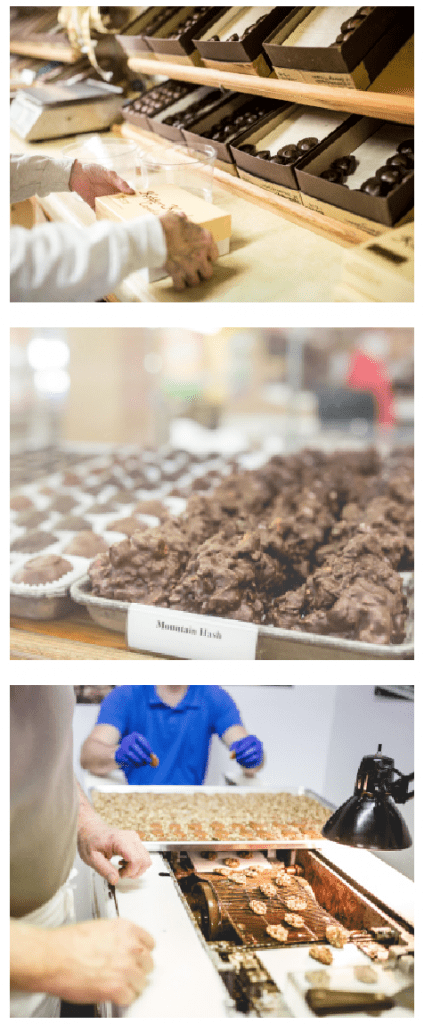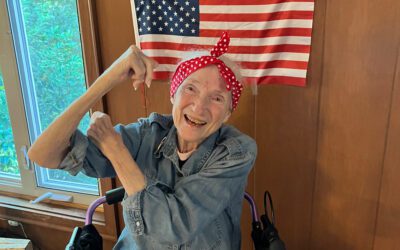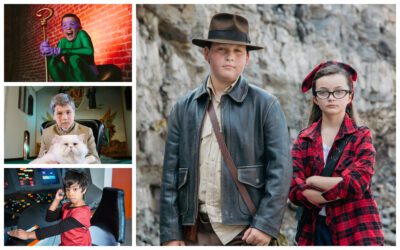[title subtitle=”words: Marla Cantrell
Images: Jade Graves, Jade Graves Photography”][/title]
Tommy Greer sits at a kitchen table in the break room of Kopper Kettle Candies in Van Buren, Arkansas. The cabinets, just a few feet away, are knotty pine, and the wall behind him is covered in cheery yellow wallpaper. In the rooms surrounding this one, candy makers are making some of the best chocolate convections you’ll ever eat. If you have just one choice, try the Ozarkies, a formula they developed in the early 1950s, which has a vanilla cream center surrounded by milk and dark vanilla chocolate and pecans. Breathe in and you’ll be surrounded by the scent of it, chocolate so rich and sweet it seems as if it could be used for negotiating world peace.
“I grew up here,” Tommy says, and then describes what the space looked like then: the bedrooms, the living room, this place they called home. This was decades ago, when he was a student at Van Buren Schools, just figuring out what the world was all about.
He’d bring friends home, many of whom would have traded places with him on the spot. Even entering the store was a pleasure. The rock building with its wide windows and white columns painted to resemble candy canes gave the place a storybook feel.
As sweet as it looked, a ton of work went into daily operations. Every day after school, Tommy did his part to keep the family business going.
 After graduating, he decided to try his hand at something else. He joined the Navy and later took a job driving a truck. The wide-open spaces, bouncing along rough roads and tugging up steep hills seemed just about perfect, and he believed he’d never work in the family business again. He married a girl named Berry Ann, the decision, even now, that he credits for all the good things that followed.
After graduating, he decided to try his hand at something else. He joined the Navy and later took a job driving a truck. The wide-open spaces, bouncing along rough roads and tugging up steep hills seemed just about perfect, and he believed he’d never work in the family business again. He married a girl named Berry Ann, the decision, even now, that he credits for all the good things that followed.
And then, in 1978, his father, Martin L. Greer, passed away, and Tommy realized his mom, Betty, would need help running Kopper Kettle Candies. For a while, he burned the candle at both ends, working in the candy store and driving the truck. It took its toll, and eventually, he realized he had to choose.
His choice was candy.
In those first years, things were tough. Six years before his father’s death, a new interstate highway arrived, pulling traffic off Highway 64-71, and business, by the time Tommy got involved, had dwindled.
Still, he believed in what he was doing. His parents had come here from Fort Worth in 1956, and they’d built a small empire. There were loyal customers, folks who couldn’t imagine Christmas or Easter or Valentine’s Day without Kopper Kettle. And that included treats like Divinity, Peanut Brittle, Turtles, even hard candies.
Tommy was right.
Today, the business has two locations: the flagship store in Van Buren and a second location in Fort Smith. Tommy and Berry Ann’s granddaughter runs the Fort Smith store, and their daughter has recently come onboard in Van Buren. (Their son owns a Golden Corral restaurant in Fayetteville.)
As Tommy says this, he smiles. He enjoys seeing successive generations stepping up to the plate.
Tommy rises, walks to the production area where the magic happens. Machines click and purr, and two women roll coconut patties that will be dipped in dark chocolate. A row of copper kettles lines the far wall, waiting to be fired up. The copper is significant since it distributes heat evenly.
Inside another room, golden pillows of molasses candy are being run through a conveyor belt that takes them through a bath of chocolate. One of his workers stands at the end of the line using a tool that brands the top of the candy. Beyond that, two more workers take the cooled candy, pack it in boxes and store it in a humidity and temperature-controlled space. As for the chocolate, they use a blend that comes from a company in California and another in Pennsylvania, via Mexico and Central America, and the Ivory Coast of Africa.
Tommy stands on a shiny, linoleum floor and surveys the work. He makes some minor adjustments to the machine that’s carrying the candy along. He knows these machines as well as he knows the rhythm of every sunrise, the cadence of every night. Some of his equipment is from the 1940s. Some of the molds he uses to make Easter rabbits and Easter eggs are from the 1950s.
And some of his customers are even older. “We have a man from Mansfield who brings the same Valentine box back every year to get it filled for his wife. That thing must be sixty years old. It’s a little rough looking, but it’s their tradition.”
He laughs. “And then we had one customer who used to bring his Valentine box in every year. One year he asks for a new box, and I asked him why. He tells me he got a new wife.”
Tommy mentions Berry Ann again. “I’ve just had the one wife. She and I are really good together, and she’s been so tolerant of me.” He laughs, a man who seems to know he’s a handful.
Valentine sales will likely involve 10,000 pounds of chocolate, all of it designed to spread joy, to be a physical representation of love. Through the years, Tommy and his crew have helped out with proposals, slipping a sparkly ring into one of the fluted paper cups that typically holds candy. They’ve handed the heart-shaped box over to a nervous man who would eventually watch as the one he loved lifted the lid and saw the future there: chocolate and diamonds. Not a bad way to start.
In one of the hallways in this grand old building is a photo collection. Some of the pictures show Kopper Kettle in earlier days, the grounds outside surrounded by signs that announced you could buy Frankoma Pottery inside, that you could watch candy being made, that you could stand for a few minutes in a spot that was air-conditioned!
Tommy’s parents understood the mindset of the tourist, the allure that caused the driver to pull over the station wagon and come inside, get a treat, let the kids stretch their legs. Maybe learn a thing or two about candy making, about Arkansas.
The photos make you wonder what would have happened if Martin L. Greer, born in 1907, hadn’t taken a job with a candy maker in Texarkana in the mid-1920s. If he’d stayed on the family farm, Kopper Kettle wouldn’t be where it stands today, this icon of our area, the sweetest history we have.
Tommy is sure his parents, who were married in 1938, would have made a success at whatever they did. The couple worked hard, always, and taught their children the same. The elder Greers lived through the Great Depression, which caused them to be cautious, to set aside for a rainy day. To build something that would last.
As a teen, Tommy was the kid who went to school, came home and got to work. “My parents believed in working, school work, and reading the Bible.” It was the same in most families he knew. His classmates were farm kids, or they took after-school jobs to help their families.
His parents bought the building from the Meadors’ family in Alma, giants in the local construction trade. It was smaller then, but still just as charming.
In a few weeks, Kopper Kettle will start making their famous Chocolate-Covered Strawberries. One of his most loyal customers will be John Tyson, from the Tyson Chicken family. He smiles. He’s met a lot of great people over the years. In the fall, they dive into the Gourmet Caramel Apple business, and customers flock to buy them. At Christmastime, crowds come to watch candy canes get made.
Tommy loves it all. He works with a group of about thirteen, some family and others who seem like it. “I’ve got to do something about that unlucky number thirteen,” he jokes, and then introduces a worker who had retired, but Tommy talked her into coming back. She is sitting in front of a vat of candy, a chocolate and pecan confection, dipping spoonfuls onto a tray. “I get to sit down now,” she says. “That was the deal.” She and Tommy laugh, a customer walks through the door, and business begins again, just as it has for sixty-two years.
Visit Kopper Kettle at 4300 Rogers Ave # 58, Fort Smith, or at 6300 Alma Highway, Van Buren.




